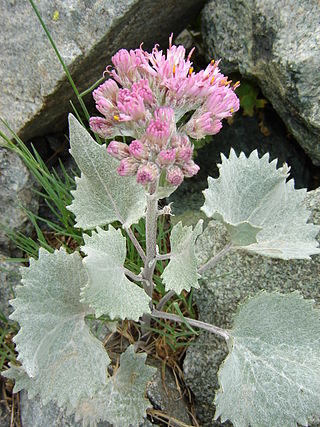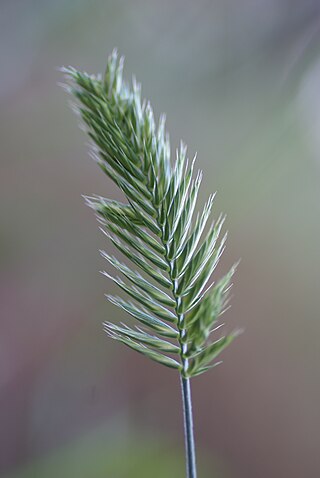
Senecio is a genus of flowering plants in the daisy family (Asteraceae) that includes ragworts and groundsels.

Adenostyles is a genus of flowering plants in the sunflower family Asteraceae, and of the tribe Senecioneae. It was described as a genus in 1816. Adenostyles occur in the temperate climates of the northern hemisphere, mainly in Europe and Asia Minor.

Syncarpha is a genus of herbaceous flowering plants in the family Asteraceae. The flowers are known by the common name: everlastings. The genus is endemic to the fynbos of the Eastern and Western Cape in South Africa.
Nordenstamia is a genus of flowering plants in the family Asteraceae.
Rune Bertil Nordenstam is a Swedish botanist and professor emeritus at the Swedish Museum of Natural History in the Department of Phanerogamic Botany. He has worked with Colchicaceae, Senecioneae and Calenduleae, was the editor of Compositae Newsletter newsletter since 1990, and is a Tribal Coordinator for The International Compositae Alliance with responsibility for the tribes Calenduleae and Senecioneae.

Elekmania is a genus of the tribe Senecioneae and the family Asteraceae. Most if not all of its members used to be placed in Senecio.
Setchellanthus caeruleus is a species of pungent shrub with large blue flowers. It is placed alone in the genus Setchellanthus, which is in turn, is placed alone in the family Setchellanthaceae. It is endemic to Mexico.

Hans Schinz was a Swiss explorer and botanist who was a native of Zürich.
Bognera is a monotypic genus of flowering plants in the family Araceae. The single species that makes up the genus is Bognera recondita. The word recondita means "hidden" referring to the fact that the plant is only found in remote areas of Amazonian Brazil near the Peruvian border. The species was discovered in the late 1970s and was originally placed in the genus Ulearum, as Ulearum reconditumMadison, Aroideana 3: 101 (1980).
Eupatoriastrum is a genus of flowering plants in the family Asteraceae. It is native to Mexico and Central America.

Robert Kühner was a French mycologist most notable for reviewing many forms of agaric genera.
Hilliardia is a monotypic genus of South African flowering plants in the daisy family. It only contains one known species, Hilliardia zuurbergensis(Oliv.) B.Nord.

Carlo Luigi Spegazzini, in Spanish Carlos Luis Spegazzini, was an Italian-born Argentinian botanist and mycologist.
Megahertzia is a monotypic genus of flowering plants in the family Proteaceae. The sole species, Megahertzia amplexicaulis, is endemic to Queensland. It is found only in part of the Wet Tropics World Heritage Area between the Daintree River and Cape Tribulation.
Capelio is a genus of flowering plant in the Asteraceae first described as a genus in 1836 with the name Alciope. It was renamed Capelio in 2002 after it was determined that the name Alciope was not legitimately published according to international nomenclatural rules. Capelio is a taxonomic anagram derived from the former name Alciope.

Wangenheimia is a monotypic genus of plants in the grass family. The only known species is Wangenheimia lima,
Lundinia is a genus of flowering plants belonging to the family Asteraceae. It only contains one known species, Lundinia plumbea.
Herreranthus is a genus of flowering plants belonging to the family Asteraceae. It contains a single species, Herreranthus rivalis.
Oldfeltia is a genus of flowering plants belonging to the family Asteraceae. It contains only one known species, Oldfeltia polyphlebia.
Humbertiodendron is a monotypic genus of flowering plants belonging to the family Trigoniaceae. The only species is Humbertiodendron saboureaui.







